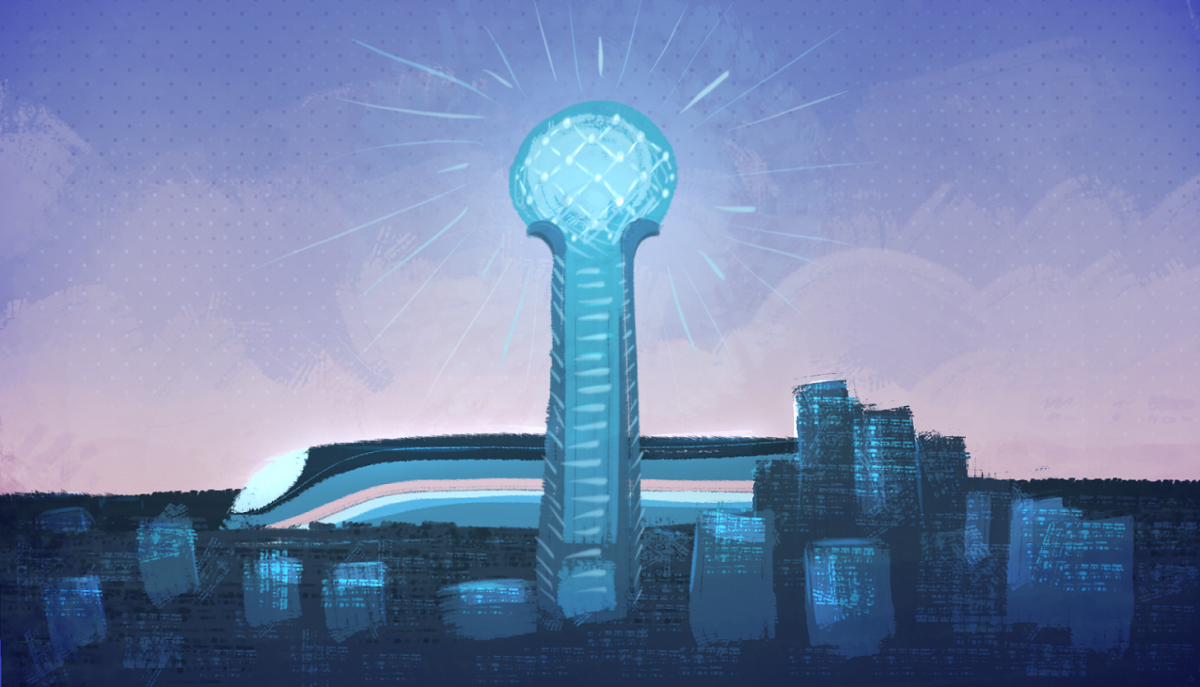The proposal of a bullet train between Houston and Dallas is long overdue, but it cannot come at the cost of removing 46 years of city symbolism and sustainable housing for an already struggling community. Comets should petition their officials in support of further study of sustainable public transportation projects, otherwise we will continue creating poor city infrastructure.
At first, the future looked bright when Amtrak and Texas Central Partners announced in late 2023 its 205 mph high-speed rail project between Dallas and Houston, which would effectively turn a four-hour drive across the most dangerous road in the United States into a 90-minute passenger drive. After nearly two decades of high-speed rail promises from the Texan government, plans solidified with the receipt of a $500,000 federal grant. Then, at a city council meeting in early March 2024, Colin Fitzgibbons — President of Hunt Realty Investments, which owns Reunion Tower and Hyatt Regency — unveiled renderings of the proposed rail to the City Council. More than 1,000 Hyatt Regency hotel rooms, its $5 billion housing development plans and the iconic Reunion Tower would be sacrificed.
If Reunion Tower were to be sacrificed, a decades-old icon of downtown Dallas city identity would forever be lost. Outside the fact that it’s featured on nearly every Dallas related website, from nearly every community of downtown, Dallas’ most unique architectural feature can be seen lighting up the night sky, and during the day it’s the only 360 degree platform where the public can see Dallas in the sky. It’s a staple in Dallas’ $7.2 billion tourism industry, most notably hosting the famous New Year ball drop and drone show, and its absence would be economically devastating when few other landmarks and attractions differentiate Dallas from any other Texas city.
Just as importantly, the train being implemented at this stage would jeopardize NorthEnd, Hunt Realty’s planned $5 billion housing project, which would be more impactful and necessary for Dallas’ current needs. 3,000 apartment units, a hotel with up to 1,000 rooms, 150,000 square feet of retail space, 2 million square feet of office space and a 3 to 4-acre park could never come to be. If you’ve been to west or south downtown, you know how badly Dallas could use these renovations. New jobs and homes would be a step to alleviating inequality and homelessness in Dallas, which has a staggering 17.7% poverty rate — the only U.S. city with more people living below the poverty line is Philadelphia. It doesn’t make sense to demand better accessibility to another metroplex when we can’t even provide better opportunities in our own metroplex. How could we call this train sustainable when it will primarily take away housing from a city that is already struggling?
I’m not saying the bullet train should not be constructed; the combined population of the Houston and Dallas metroplexes is almost 13 million, and even if only a fraction of those people ride twice a year, it would receive many riders. And it’s not as if Hunt Realty’s renovations will magically fix poverty and homelessness. But progress cannot be circumvented by convenience when we could pursue less destructive solutions if given more time. Even if it’s a step in the right direction for improved accessibility, the installation of the bullet train won’t solve Texas’ dependence on cars and highways, or reverse the damage already done. Hunt Realty’s renovations can make a difference in Dallas; the same can’t be said for a train. It’s not impossible to have our train and new opportunities together, we just need more time and research to create something mutually sustainable.
Let the bullet train come to Dallas, but Comets should advocate for construction that doesn’t destroy a city icon or potential homes. We should not follow in the footsteps of what highways have already done to our city, just because it’s convenient. If we’re truly for accessibility, then let’s at least do it right. Comets can attend the city council meetings and push for a better standard of accessibility. Included in Hunt Realty’s $5 billion plan is renovations to the Eddie Bernice Johnson Union Station, which if given more time and research, could become a better home for the bullet train. Or the bullet train could come into Dallas from a different or newly constructed station, interconnected with DART.
We owe it to our city to consider all alternatives. After all, Dallasites have already waited two decades. What’s a few more months to find a better, more sustainable alternative?






